UPROAR OVER WHITE ZIMBABWEAN BEAUTY PAGEANT : MY THOUGHTS
UPROAR OVER WHITE ZIMBABWEAN BEAUTY PAGEANT : MY THOUGHTS
**A general discussion about the place of white African citizens on the continent following confected social media outrage—egged on by certain media outlets— over a white Zimbabwean winning a beauty pageant**

I am not really a fan of beauty pageants. They are hardly of interest to me. But then, I do get drawn to controversies, especially those thriving on various social media platforms, including Twitter.
No, Elon Musk, I will never refer to it as “X”. Moving on…
Although, I don’t have a personal account there, Twitter is probably the most interesting of all the social media platforms. On Twitter, you can glean a lot of information of varying quality—some really good, some mediocre and some arrant nonsense.
On that platform, you can find lots of confected controversies such as the brouhaha over Zimbabweans deciding that a white citizen of their nation should win the 2023 Miss Universe Zimbabwe beauty pageant.
Ironically, my first acquaintance with Twitter was in July 2009 when a fake outrage orchestrated by the Euro-American media broke out there.
Then Russian President, Mr. Dmitry Medvedev, had come to Nigeria on a state visit. During his visit, he signed a memorandum of understanding (MOU) with the federal government of Nigeria, which would see Gazprom invest $2.5 billion in a joint venture to build refineries, pipelines and gas power stations in the country.
The name of the joint venture between Gazprom and the Nigerian National Petroleum Corporation (NNPC) was called “NIGAZ.”
As one have come to expect, Euro-American corporate media began an immediate campaign of calumny, claiming that the Russians were “racists” and had deliberately named the joint venture “nigaz” because it was phonetically close to the “N-word”, which is taboo in the collective West, but almost meaningless to your average black African, who isn’t hypersensitive to racial issues.
I exempt black South Africans from the above description. Compared to other Africans, they are, by far, more sensitive to racial matters due to their own unique history.
Within the Nigerian Federation, this confected outrage had no effect. Nobody turned on the Russians as the Euro-American corporate media had expected, but Black Americans— who know little about the continent of Africa — were overly offended by the news reports and went on Twitter to rage about it. Some liberal white Americans also joined them in the fake outrage.
Meanwhile, many Nigerians were so bemused by the online controversy that they opened accounts on Twitter just to check it out. Yours truly did not open an account, but did visit the social media platform for the first time.
To keep the outrage going, the media put their journalists on the story. The British Broadcasting Corporation (BBC), which has a large presence on the continent sent its reporters to speak to ordinary Nigerians on the streets. And they seemed surprised that Nigerians did not give a damn about the similarity between Nigaz and the “N-word”.
Reuters sent their own journalists to Nigeria and came back with a news report implying that most Nigerians didn’t care about the fake controversy. In other words, despite the misleading Reuters headline below, there was, in fact, no stirring racism debate, at least not within the borders of the Nigerian Federal State.
In fact, one flustered Nigerian interviewed by Reuters said the following:
“White people are making too much of this. As long as the Russians pay us, they can call it what they like.”
The Nigerian interlocutor speaking to Reuters News Agency was not referring to white people as a whole, but to the unprecedented numbers of American and European journalists snooping around Nigeria in June 2009, looking for black Africans angry with Russia for coming up with the name, “Nigaz”, which is just an innocent portmanteau of the words, “Nigeria” and “Gazprom”.

The Euro-American media forgot that most of sub Saharan Africa does not have the kind of racial tensions that one currently observes in USA, UK, South Africa and to a much lesser extent, Zimbabwe.
Apart from South Africa and Zimbabwe, countries like Kenya, Namibia, Zambia, Botswana and Angola have small communities of white citizens who are generally on amicable terms with the black African majority.
In addition to whites, Kenya also has small communities of Arab and Indian citizens. In 2017, a presidential proclamation officially recognized the Indian community as the “44th tribe of Kenya”.
As I mentioned in this old Substack article, post-independence Namibia actually wrote a constitution protecting the rights of their white citizens.
In the first season of the continent-wide reality TV show, Big Brother Africa (BBA), which ran from 25 May 2003 to 7 September 2003, the nation of Namibia was represented by Stephan Ludik, who is white.
To put things in the proper context, white Namibians constitute just one percent of the total national population. So, for Stephan to win a place as the Namibian contestant of BBA, he had to rely on the votes of black Namibians who decided to select him instead of any of the other black Namibians competing alongside him.
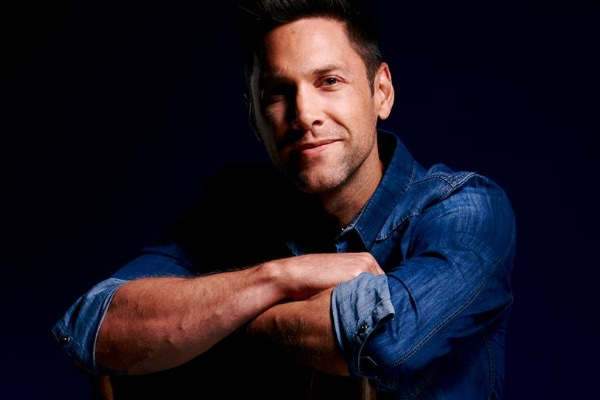
Of course, the selection of Stephan Ludik caused a bit of a consternation in other African countries, including Nigeria. But then, everybody got over it. Throughout the running of the reality show, black African TV viewers consistently voted him the most popular housemate of that BBA season.
Namibia’s northeast neighbour is Zambia. When the colony of Northern Rhodesia (now Zambia) was still in existence, its white population—mostly of Scottish descent—supported the black African majority in its call for total independence from the UK.
At the time, Northern Rhodesia, Nyasaland and Southern Rhodesia were part of a super-colony called the Central African Federation of Rhodesia and Nyasaland (1953-1963), better known by its acronym, CAF.
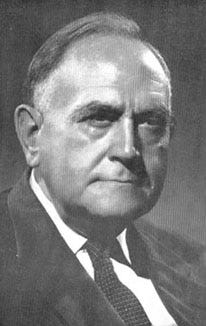
To the chagrin of the local white ruling elites of Southern Rhodesia (now Zimbabwe), the UK Colonial Office dissolved the colonial federation on 31 December 1963 to pacify the protesting black majority in Northern Rhodesia and Nyasaland.
On 6 July 1964, Nyasaland became the independent Republic of Malawi. Northern Rhodesia followed on 24 October 1964 under the name, Republic of Zambia.
As many whites in Zambia had backed independence, there was mostly no tensions between them and the black African majority. In fact, a few white Zambians would even go on to have successful political careers.
In the United States, you often have areas where the black racial minority is dominant (e.g. cities such as Atlanta, Memphis and Detroit).
In Zambia, there are no areas where the white racial minority—0.2 percent of the national population— is dominant. Therefore, a white Zambian can only have a successful political career if he can win majority of the black Zambian vote. An example of such a politician is Guy Scott who joined the opposition Movement for Multi-Party Democracy (MMD) in 1990.
At the time, smaller political parties such as the MMD were struggling to oust then ruling United National Independence Party (UNIP), which ran Zambia from 1964 to 1991 as a one-party civilian dictatorship with a socialist (not Marxist) orientation.

The dictatorship ended after a constitutional amendment that allowed new opposition political parties to be formed and for multi-party democratic elections to be organized on 31 October 1991.
In those elections, Zambians voted overwhelmingly to oust the corrupt UNIP from power, catapulting the then brand new MMD party into national leadership of the country.
As always happens on the continent, the popularity of MMD would eventually wane due to the corruption scandals of its founder, Frederick Chiluba, who led the country as national President from 1991 to 2002.
After his retirement from public office, anti-corruption investigators confirmed that he had indeed converted government funds to personal use.
His own protégé and successor, President Levy Mwanawasa, prosecuted him for corruption, starting from 2003. After a lengthy court trial, judges of the lower courts acquitted Chiluba in 2009.
By then, Levy Mwanawasa had already died, and his successor, President Rupiah Banda, blocked the state prosecution service from appealing Chiluba’s corruption case to the higher courts.
Nevertheless, there were other lawsuits—including in the UK—over properties illegally acquired abroad by Chiluba while in office.
From his retirement from active politics in 2002 to his death in 2011, Chiluba was dogged by various lawsuits over his misuse of public funds while in office.
SIDE BAR: CHILUBA THE SENSITIVE DWARF LEADER
Throughout his career, first, as a popular trade unionist leader and, second, as President of Zambia, Chiluba was constantly mocked for his appearance both by allies and opponents. He was 1.5 metres (5 feet) tall.
During his early days as an opposition politician, Chiluba was constantly referred to as a four-foot dwarf by Kenneth Kaunda who was then the incumbent President.
Nevertheless, Chiluba remained popular and ousted Kaunda in the October 1991 Presidential Election. The political party that he created, Movement for Multi-Party Democracy (MMD), won 74% of the seats in the national legislature during the concurrent parliamentary elections.
After his popularity began to decline as a result of corruption scandals, the local media began to emulate Kaunda’s personal taunts on Chiluba. The Zambian Post newspaper wrote a scathing editorial referring to him as “a vain, cross-dressing, high-heel wearing, adulterous, dwarf thief.”
An attempted military coup d'état in 1997 frightened Chiluba and compelled him to temporarily jail political opponents, including former President Kenneth Kaunda.
Sensitive about his diminutive stature, President Chiluba spent government funds on more than a hundred pairs of custom-made shoes, with raised heels, to make him appear taller than he actually was. Even his own cabinet ministers made fun of him. One of such government ministers was Michael Sata who would eventually leave MMD to form his own party and run for presidential office.
Many of the shoes, ordered from Switzerland, were monogrammed with Chiluba’s initials. He also splashed out on three-piece and two-piece suits because he had to look dapper for the Zambian public. Unfortunately for him, the Zambian public was not impressed at all.
But, long before the party lost its popularity to corruption scandals, the MMD was the vehicle that launched the political career of Guy Scott who is of Scottish descent. In the parliamentary elections of October 1991, he was one of several MMD politicians that won seats in the national legislature.
Shortly after his electoral victory, Scott was appointed Agriculture Minister in Chiluba’s government. Scott would remain in that cabinet position until President Chiluba fired him in 1993.
As the popularity of MMD declined, Scott bailed out of the party in 1996.
In 2001, Scott won another parliamentary seat in the Zambian capital city of Lusaka as a member of newly formed Patriotic Front, which came into existence as a breakaway party of the increasingly unpopular MMD.
However, the leader of the new party, Michael Sata, was not as lucky as Guy Scott.
Michael ran for presidential office in 2001, 2006 and 2008. On each occasion, he was defeated by presidential incumbents— President Levy Mwanawasa and later on, President Rupiah Banda.
Becoming desperate to win power, Michael Sata capitalized on the growing tensions between Chinese owners of Zambian copper mines and local Zambian workers protesting “low wages” and “poor working conditions”.
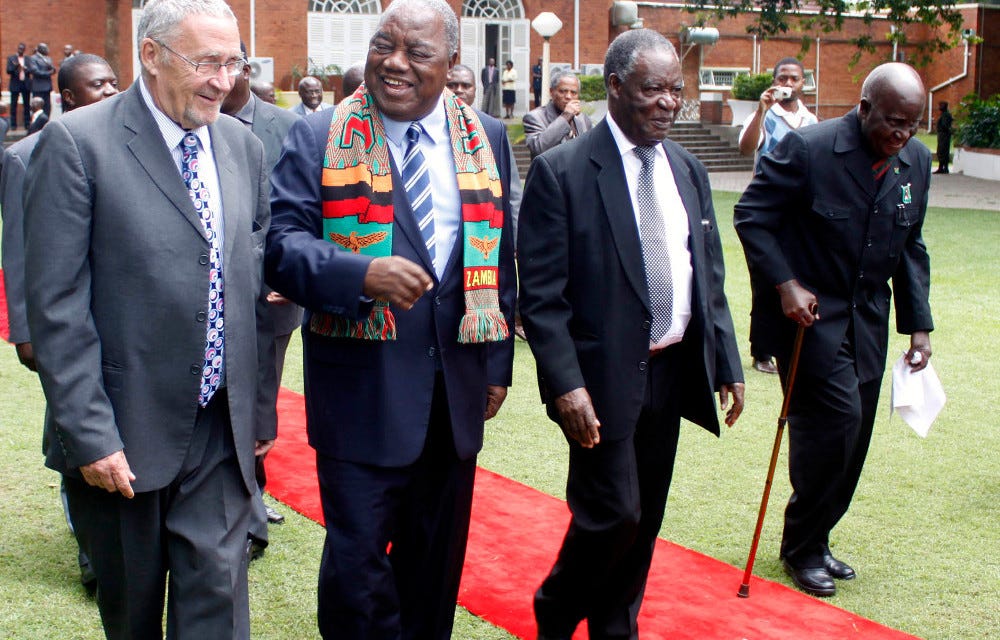
Despite attempts by Euro-American media to paint it otherwise, the tensions were largely cultural.
Chinese owners of the copper mines were unfamiliar with the robust trade union activity of Zambia and overly generous time-offs as those were absent back home in China. While Zambian workers could never countenance Chinese-style dormitory labour system, where low-wage earners—with little or no extra perks— spend very long hours working for a company, which provides them with dormitories either within its premises or nearby.
To elevate his chances of winning electoral office, Michael Sata began to make anti-Chinese remarks in the local media. He said Taiwan and Hong Kong were “sovereign nations” and promising to kick Chinese entrepreneurs out of Zambia despite the fact that these Asian businessmen literally saved thousands of local jobs in the copper mining industry after many Western extractive companies downsized their operations in the country due to unprofitability issues linked to the decades-long “boom and bust” cycles of metal prices.
During his presidential campaign in 2011, Michael renewed his anti-China rhetoric, accusing Chinese mining firms of having “slave-like labour conditions” and “ignoring safety standards and local cultural practices”. He reiterated his pledge to get rid of Chinese entrepreneurs in Zambia.
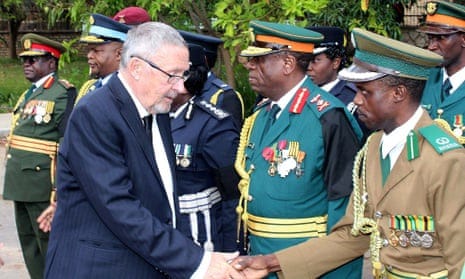
In response, Zhongnanhai shot back, stating explicitly that China would pull all its investments if Michael Sata won the 2011 Presidential Election. Till date, that sharp response is the one and only time, the government of China has ever publicly weighed in on an election in Africa.
Ultimately, Michael Sata won the election and became President of Zambia, and Guy Scott made history as the first white Zambian to ascend to the office of Vice President.
Meanwhile, China ate up its pre-election threat and kept its Zambian investments intact.
Once the general election was over, President Michael Sata took one look at the economy of Zambia and realized the key role that China was playing in it. He jettisoned his anti-China rhetoric and moved quickly to improve diplomatic ties, causing widespread dismay among the previously excited Euro-American corporate media.
While still in his first term in office, Michael Sata died of an undisclosed illness on 28 October 2014, making him the second Zambian President to suddenly die in office after Levy Mwanawasa in 2008.
Mike Sata’s death paved the way for Guy Scott to become the second white leader of a democratically elected government in Sub-Saharan Africa.
SIDE BAR: SCOTT AND BERENGER
White leaders of apartheid South Africa and the unrecognized Rhodesian State do not count since only tiny fractions of their national populace were ever allowed to cast votes.
Guy Scott was the second white leader to be part of a government that came to power in Sub Saharan Africa through an election based on universal franchise.
The first white leader to achieve same in Sub Saharan Africa is former Executive Prime Minister of Mauritius, Mr. Paul Raymond Bérenger, on 30 September 2003.
Paul Bérenger belongs to the Franco-Mauritian community, which represents two percent (approx.) of the national population of Mauritius.
In accordance with Zambia’s constitution, President Guy Scott organized the 2015 Presidential Election, but declined to participate in it.
Contrary to what has been reported by certain media sources, he was actually eligible to contest the elections as the Zambian Supreme Court had disputed the wording of a 1996 constitutional amendment that stipulated that a citizen is only eligible to contest for presidential office if both parents are Zambian by birth or descent.
The amendment had been put in place by Frederick Chiluba to prevent his sworn enemy—former President Kenneth Kaunda— from participating in future presidential elections.
Kaunda’s father was from neighbouring Malawi, which meant he was ineligible to run again for presidential office. In the year 2000, the constitutional provision was challenged in the Supreme court, which ruled in favour of Kaunda.
Fourteen years later, the controversial constitutional provision was raised again because Acting President Guy Scott was born to immigrant parents from the UK.
A few Zambians tried unsuccessfully to use the provision to block Scott from ascending to the presidency after the death of Michael Sata.
After declining to participate in the 2015 presidential election, Scott retired once a new President came to power.
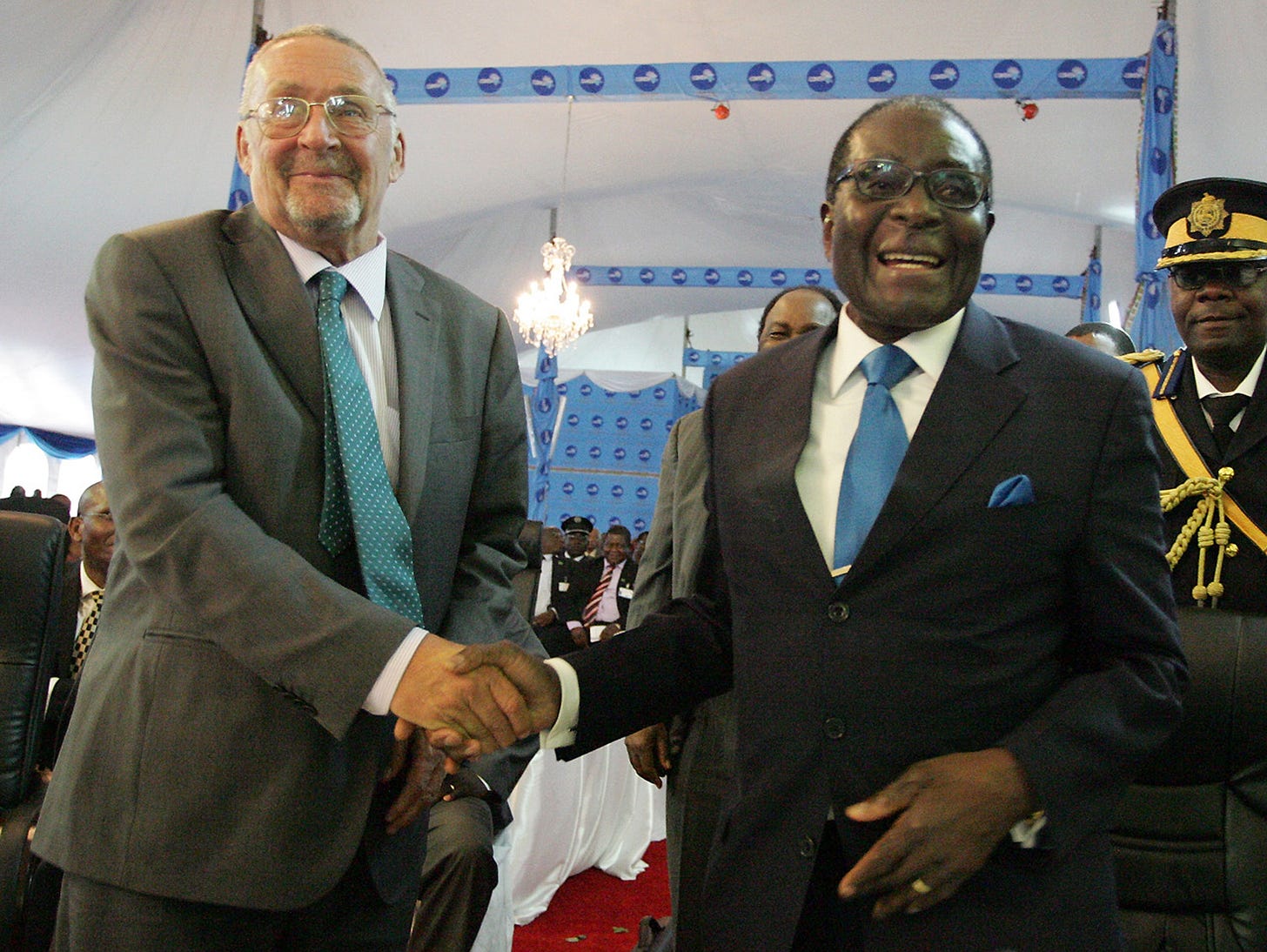
Zambia’s neighbour to the south is Zimbabwe. Similar to Zambia, the white population of Zimbabwe represents less than 1 percent of the national population.
Unlike Zambia, some racial tensions do exist between black and white Zimbabweans because of its history.
In the 1960s, the British were in the middle of liquidating their colonial empire. In most of the colonies, the decolonization process went smoothly. However, in the self-governing territories of South Africa and Rhodesia, the departing British colonial administration met a brick wall.
The local white ruling elites were not prepared to cooperate with the UK Colonial Office, which was keen on a power sharing arrangement between whites and blacks as part of its decolonization efforts.
The hardline Rhodesian Front, which ran the self-governing colony of South Rhodesia declared its territory an independent state in November 1965. That unilateral declaration intensified the civil war, which began the year before.
For its entire existence, the Rhodesian State (1965-1979), under the rule of Ian Smith, was not formally recognized by any other country in the world— including apartheid South Africa, which supplied it with military and economic support.
By 1980, the Rhodesian State had disappeared, and in its place was Zimbabwe under the control of Robert Mugabe. From 1980 to 2000, relations between whites and blacks in Zimbabwe seem to be going well. Whites served as legislators and some even served as cabinet ministers in Mugabe’s government. The Zimbabwean judiciary included several white judges.
However, in the year 2000, Mugabe decided to start seizing white-owned farms claiming that the British government had failed to honour the land distribution provisions of the Lancaster House Agreement. The British government hotly disputed Mugabe’s claims.
Most of the violent seizures of farmland from white Zimbabwean farmers were not carried out by official government agencies. It was performed by a pro-Mugabe non-governmental organization called Zimbabwe National Liberation War Veterans Association, which had 30, 000 members and received its funding from the ruling political party, ZANU-PF.
White farmers who resisted were violently assaulted and some emigrated to UK, continental Europe and Australia. But a huge number did not leave the continent. They either stayed back in Zimbabwe or relocated to other African countries, which welcomed them. Examples of such refuge countries include: South Africa, Namibia, Zambia, Mozambique, Tanzania, Kenya, Malawi and Nigeria.
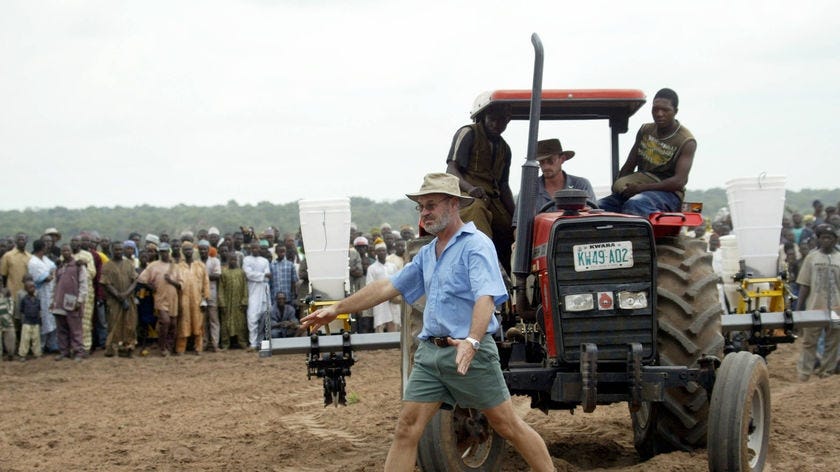
On the invitation of the government of Kwara State, two thousand white Zimbabwean farmers came to Nigeria in 2005 and were offered large swathes of free land— mostly barren and unwanted— to resume their farming activities.
The Nigerian federal government gave its blessing to the actions of Kwara State and uproar within the country was mostly limited to a tiny number of individuals, self-proclaimed “anti-colonialists”, who tried, but failed to stoke racial animosity among Nigerians. Many of these Zimbabwean farmers, who had arrived penniless, were able to secure finance from local Nigerian banks to get started.
At this juncture, it is important to note that not all white Zimbabweans are farmers living in rural areas. In fact, many whites in Zimbabwe are doctors, engineers, lawyers, architects, university academics based in urban centres such as the cities of Harare and Bulawayo.
These urban whites did not have to flee Zimbabwe as they were not the target of the rather thuggish Zimbabwe National Liberation War Veterans Association.
White Zimbabwean medical doctor, Timothy Stamps, was Minister For Health in the government of President Robert Mugabe at the time. For that reason, he was among 92 Zimbabwean citizens slapped with European Union (EU) sanctions in July 2002. His assets in the EU (which then included UK) were frozen and he was banned from entering any EU country.
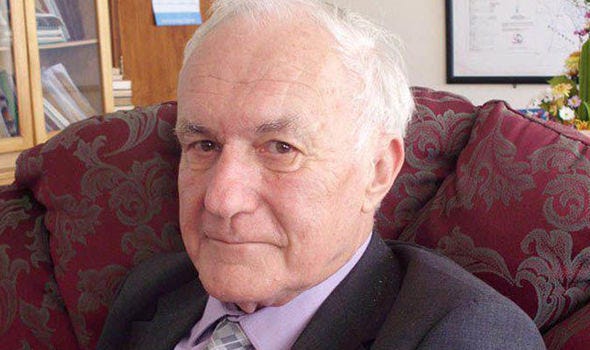
Several urban white Zimbabwean businessmen had strong links to the ruling ZANU-PF party and so ended up on sanction lists. A good example is John Bredenkamp, who was on the sanctions list of both USA and EU.
Despite his racial rhetoric, Mugabe gave orders for the octogenarian ex-Rhodesian leader, Ian Smith, to be left alone in his farmstead. Nevertheless, Mr. Smith chose to emigrate to South Africa in 2005 for health reasons. He died in the South African city of Cape Town in 2007 following a stroke.
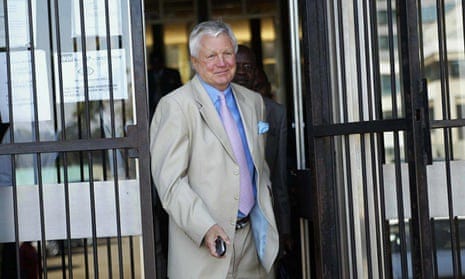
Given that urban white Zimbabwean professionals were somewhat shielded from what the white farmers of rural Zimbabwe were facing, it is no surprise that Kirsty Coventry felt no discomfort in representing her country in the 2008 Olympics to the surprise of many people in the collective West who have no clue about the nuances of the situation inside Zimbabwe.
The Euro-American corporate media was further surprised when Mugabe called the white Zimbabwean swimmer our “golden girl” and personally awarded her 100,000 US dollars, in cash, for her Olympic performance.

In November 2017, the Zimbabwean Armed Forces—which started out as an amalgam of the armed wings of two distinct Marxist parties—staged a soft military coup that did not really overthrow Mugabe, but mostly kept him in a kind of semi-house arrest in order to “encourage” him to resign.
Mugabe refused to resign and insisted on attending to government business. Three days into the soft coup d’état, the putschists temporarily released Mugabe from house arrest to attend a graduation ceremony at Zimbabwe Open University in the capital city of Harare.
The putschists also allowed Mugabe to make a televised broadcast in which he insisted that he was still President.
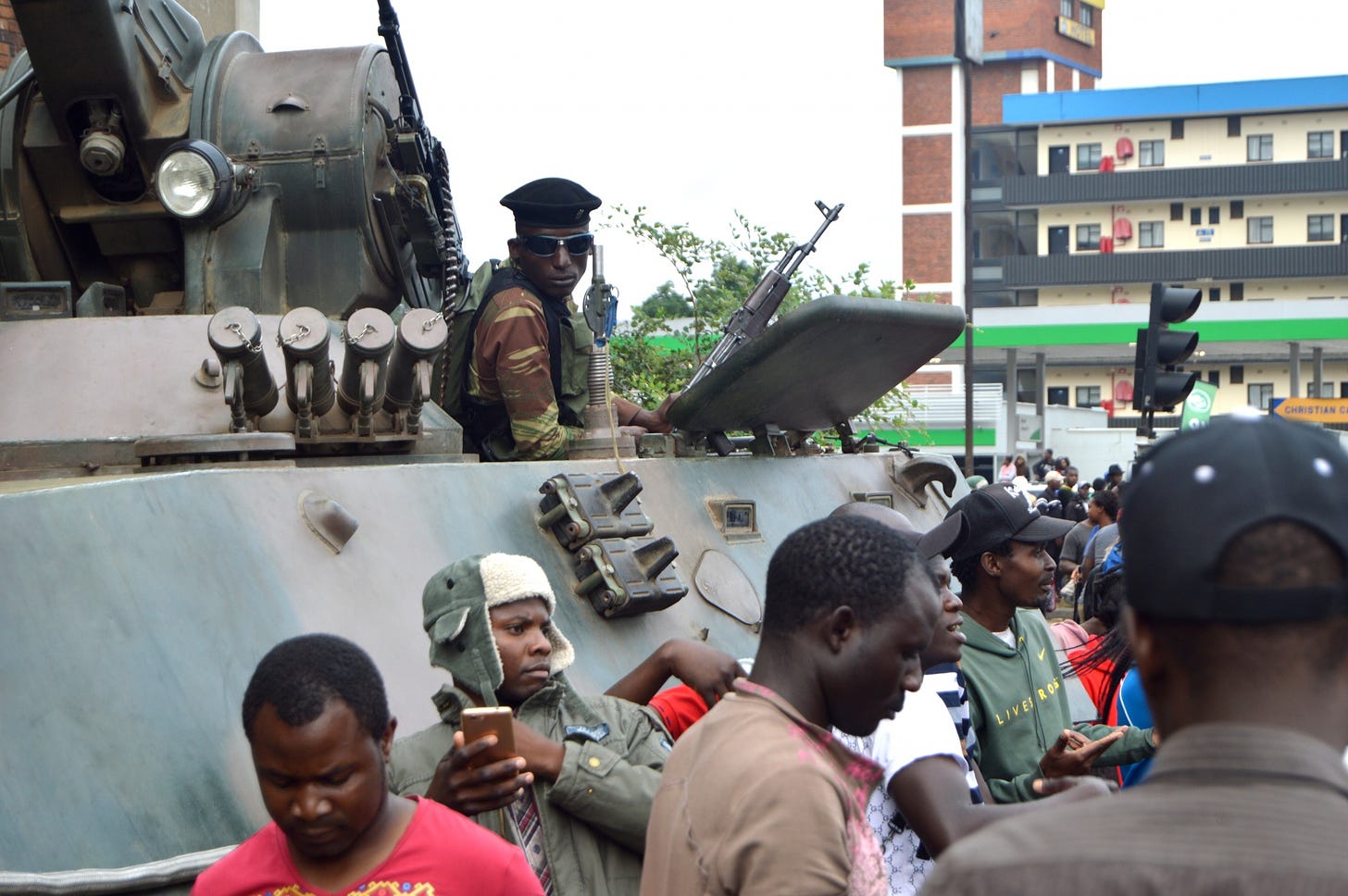
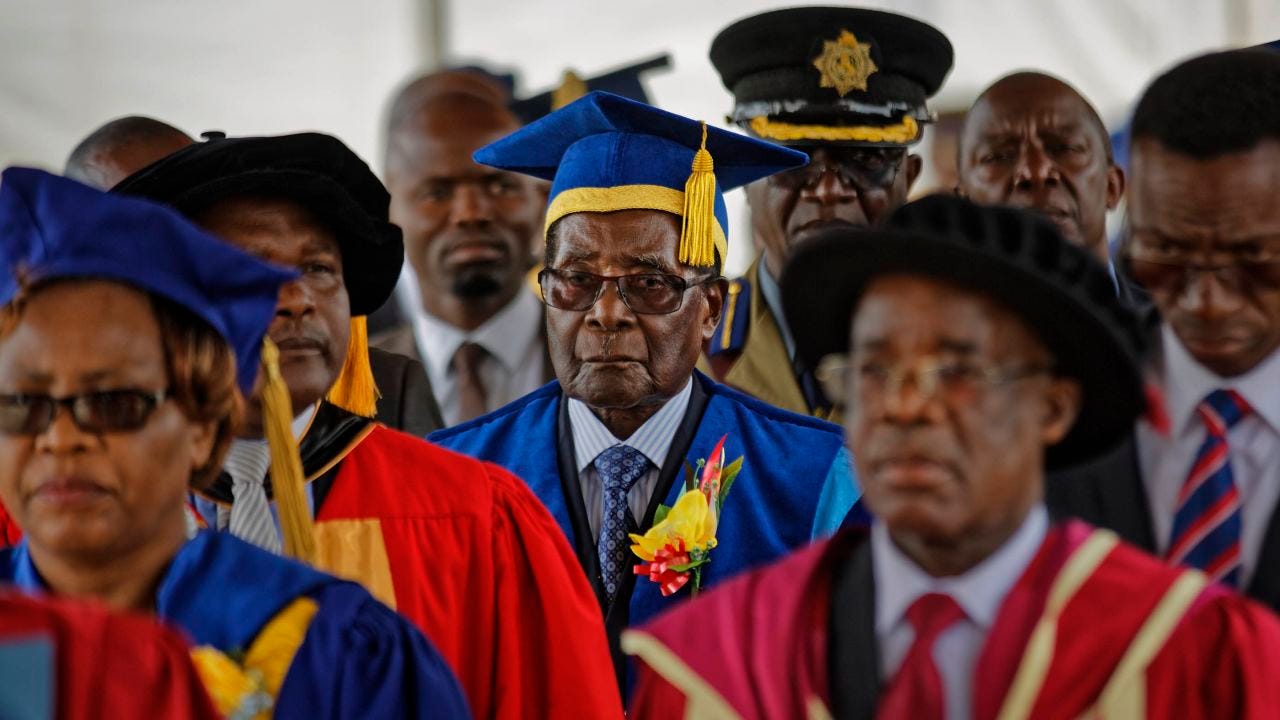
Unfortunately for Mugabe, parliamentarians from his own political party threatened to impeach him if he refused to resign. That threat finally forced Mugabe to resign as President, bringing the extraordinary one-week-long coup d’état to a bloodless end.
Before the coup, China and South Africa were informed in advance by the Zimbabwean coup conspirators.
Zimbabwean army chief General Constantino Chiwenga informed his Chinese military counterparts while on an official visit to China, four days before the coup.
The South Africans were informed six days in advance by Christopher Mutsvangwa, leader of the formerly pro-Mugabe Zimbabwe National Liberation War Veterans Association, which had spearheaded the violent farmland expropriations.
Since former central intelligence chief, Emmerson Mnangagwa, took over as President, the economy of Zimbabwe has stabilized with Chinese and Russian support. White Zimbabwean farmers have begun to return, and some have successfully used legal action to recover expropriated lands.
Given the cooling of racial tensions in Zimbabwe, I don’t think there is anything particularly shocking to see a 21-year-old white citizen, Miss Brooke Bruk-Jackson, winning a local beauty pageant. After all, none of the black Zimbabwean contestants are disputing the decision of the pageant judges, who are themselves also black.
Here is the video of the “controversy” lighting up sections of the social media:
Of course, mass media outside the African continent, particularly in USA, could not resist a little bit of controversy.
The black American weekly newspaper, Atlanta Black Star, expressed its outrage, forgetting that nobody in Zimbabwe even knows that it exists:
The Daily Caller, an American newspaper co-founded by former FOX News anchor, Mr. Tucker Carlson, weighed in as well, forgetting that Zimbabwe, in the post-Mugabe era, is nothing like United States riven by racial controversies, often led by stupid people who think “mathematics is racist” :
Some of the pearl-clutchers on social media are undoubtably black African. However, a huge, disproportionate number of outraged online commentors seem to be Black Americans who know very little about the continent and may be shocked to learn that there are over 200 million people who aren’t black at all, but live as citizens of various African states.
Just as they may also be surprised to learn that most inhabitants of Sub Saharan Africa don’t care about “black Cleopatra”—an entirely fictional character.
The real Cleopatra was of partial Greek ancestry and ruled as Queen of Ptolemaic Egypt, an expatriate Greek state on African soil.
Why should we bother about Ancient Egypt (often conflated with Ptolemaic Egypt) when we have great pre-colonial era states in Sub Saharan Africa such as Kingdom of Axum (150 BC–960 AD); Ethiopian Empire (1270-1974); Oyo Empire (1300-1896); Benin Kingdom (1180-1897); Kanem-Bornu Empire (700-1380); Mali Empire (1226 -1670); Songhai Empire (1464–1591); Sokoto Caliphate (1804-1903); etc, etc.
There are more pyramids in the Kingdom of Kush and its successor states than in Ancient Egypt, albeit much smaller in size. What is more, the successive Kushite Kingdoms were run by Nubians who are undisputedly black African. So why the obsession with Ancient Egypt?
Circling back to the controversy over the beauty pageant…
Once you leave the confected outrage inside the virtual space of social media and step out into the real world, you will notice that things are markedly different.
Inside Zimbabwe itself, Miss Brooke Bruk-Jackson, the beauty pageant winner, seems to be getting good press attention. Here is an interview conducted by the local TV station, ZimPapers Television Network (ZTN):
This interview transmitted to all TV sets across the length and breadth of Zimbabwe tells me that the old tensions of the Mugabe era are slowly receding. And that can only be a good thing.
Source: Sharp Focus on Africa
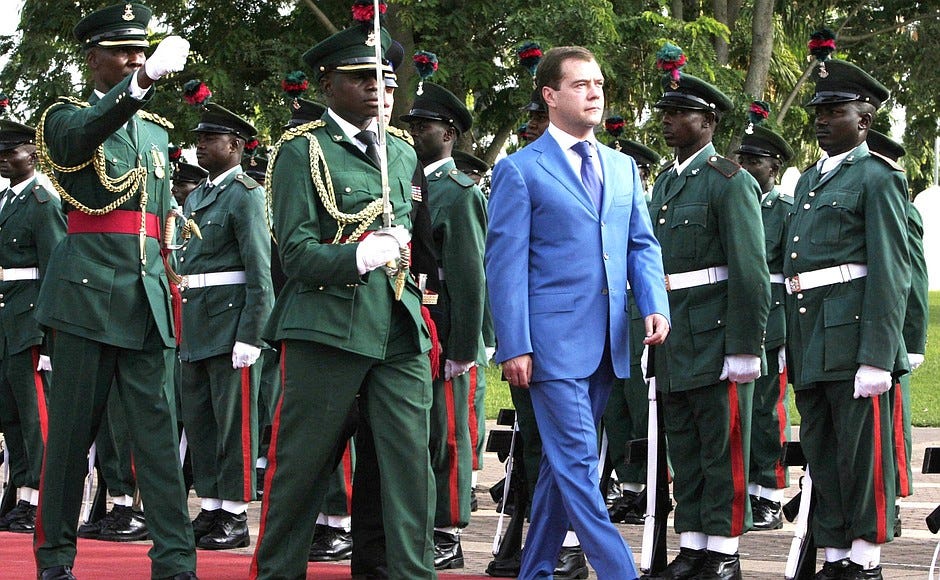

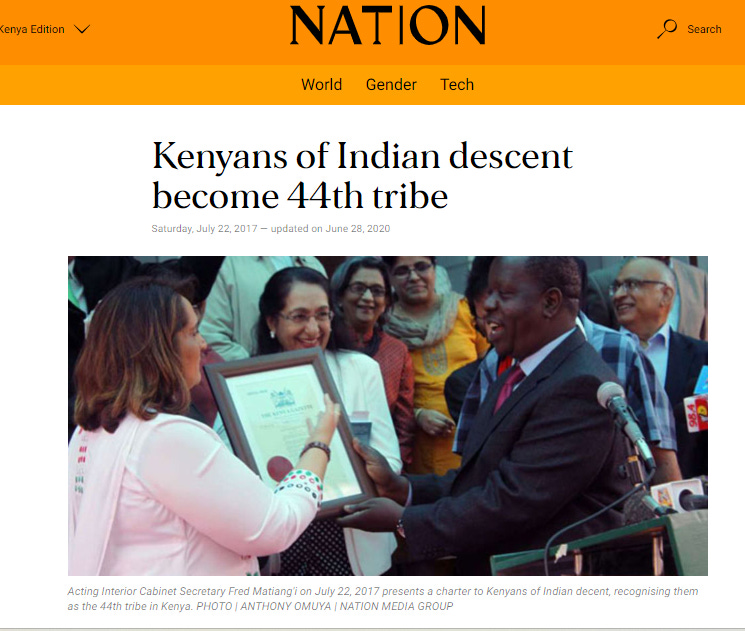
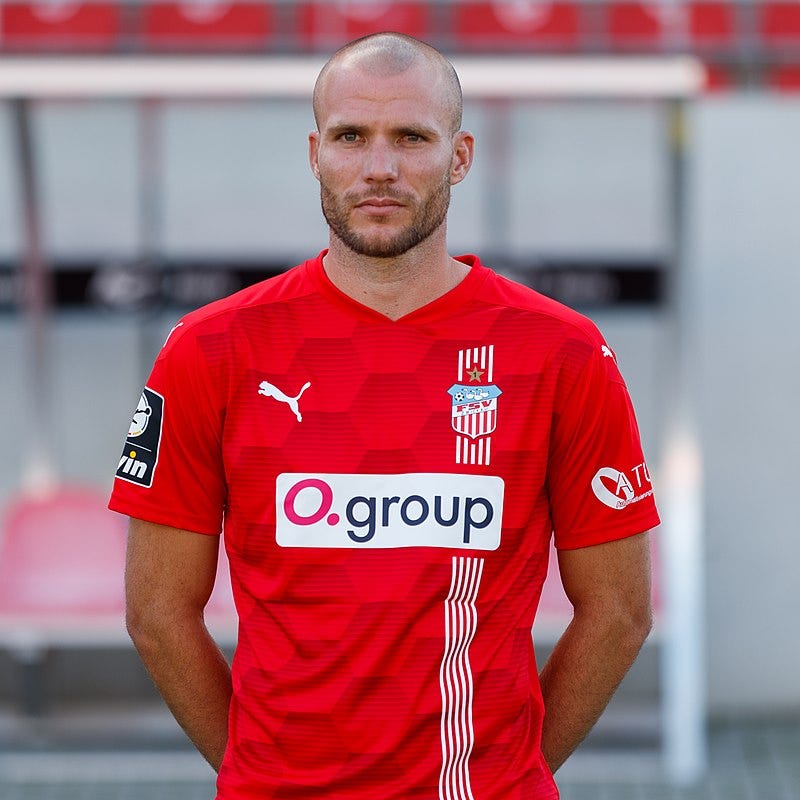
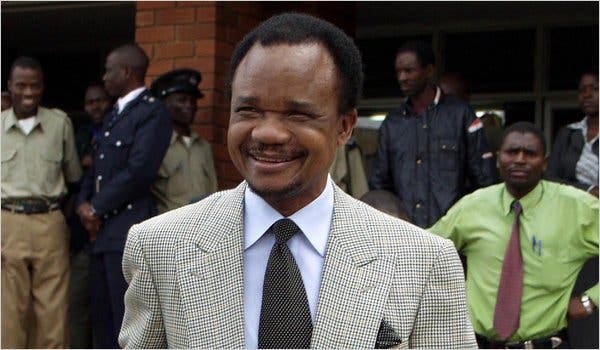

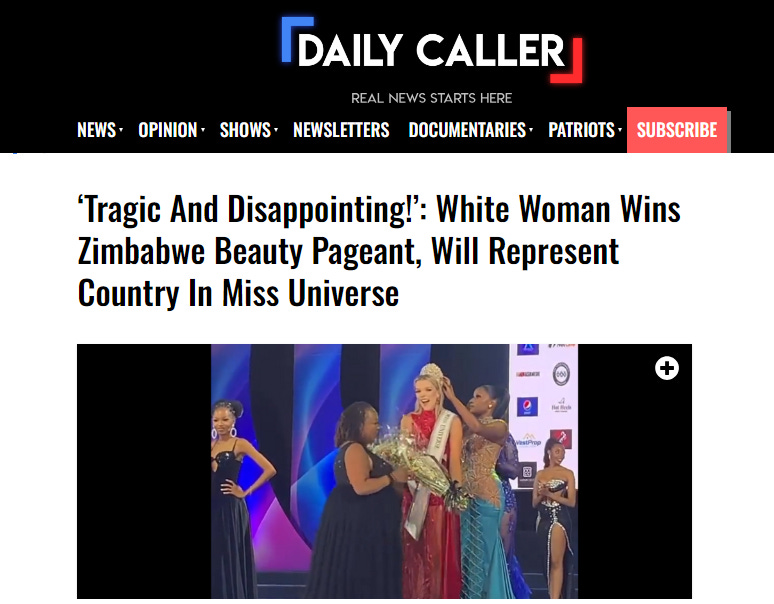
Comments
Post a Comment